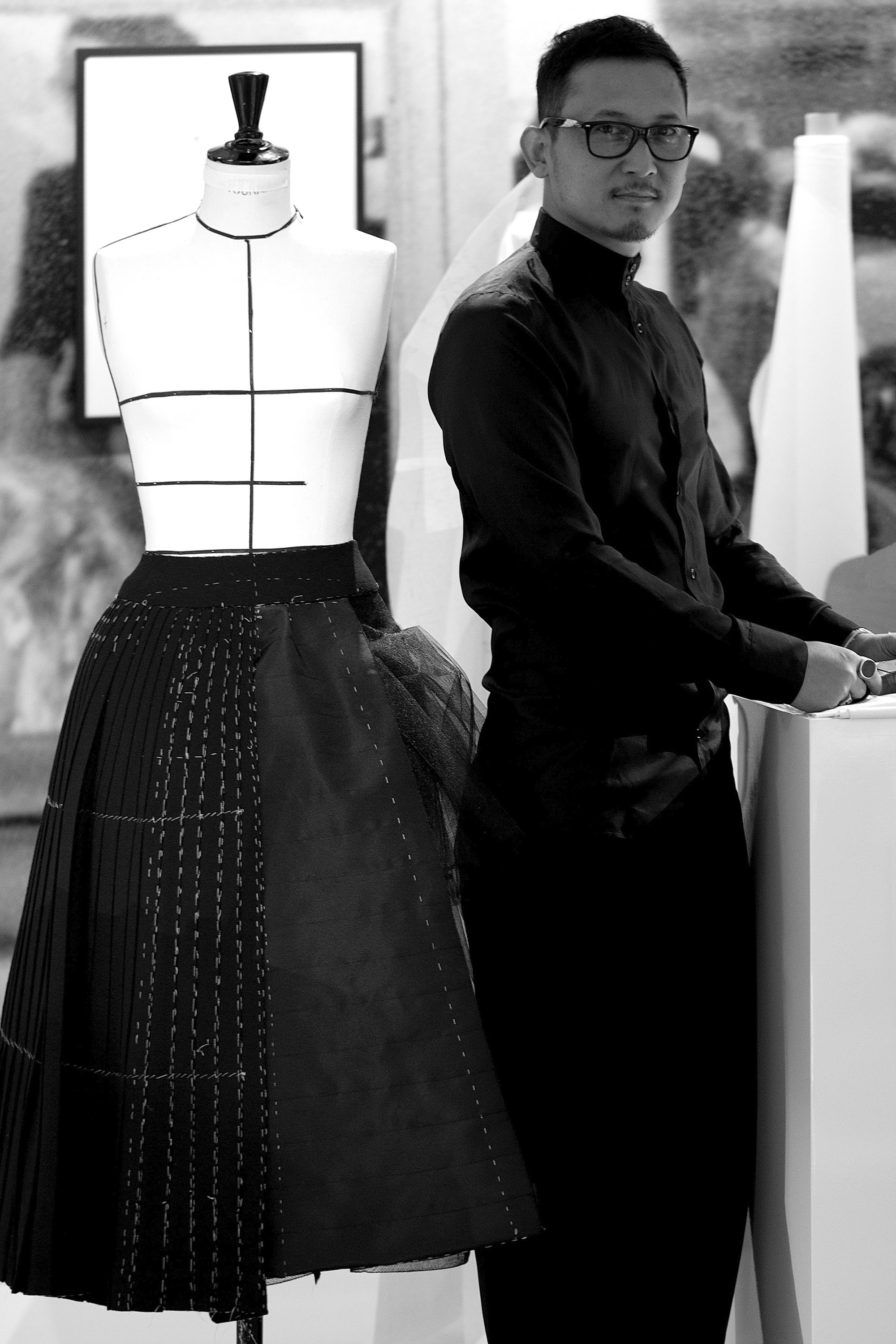Hongbo Li:
A Passion for
Excellence
Dior Magazine is pleased to introduce a new feature dedicated to the “Dior Hands” who embody excellence in fashion. In 2024, Hongbo Li, our Premier d’Atelier in the Flou and Tailoring Ateliers* – a key role in haute couture – celebrates his twentieth anniversary at Dior. A dazzling trajectory driven by his unconditional love of the savoir-faire the House cherishes. Interview by Marie Audran.
MARIE AUDRAN: October 4th, 2004, marked your first day at Dior: what was that like for you? HONGBO LI: I’ll never forget it. It was a dream come true, and at the same time totally unreal. Even today, I feel like I’m living that dream! I showed up for a six-month internship and... never left! I’ve loved fashion ever since I was little, no doubt influenced by my mother who had a dressmaking atelier. Very early on, I wanted to become a designer, much to her dismay because she knew how demanding that job is, with lots of sleepless nights and stress. But I’m so passionate about it – I never feel tired! HL: I learned dressmaking at Dalian University; I had to pass a drawing exam (as required in China for that course of study), and I had to learn the artistic practice in three intense months. I was fascinated by Dior’s history. The only way to have a chance of working there was to come and study in Paris, which I did in 2001, when I entered the École de la Chambre Syndicale de la Haute Couture Parisienne (now the Institut Français de la Mode), where I received the Grand Prix in my graduating class, which was... an internship at Dior! Having already packed my suitcase to go back to China, I couldn’t believe it. All the more since I particularly adored John Galliano’s work (my prizewinning project was inspired by his silhouettes for Dior and the deconstructed suit); at the time, he was the House’s Creative Director. Everything aligned… and it all seemed too good to be true! HL: I was offered a place in the design studio straightaway, but first I wanted to work in the Atelier to learn all the savoir-faire of the hand. And that’s when I realized the full scope of the House’s excellence. Pieces for customers and the next fashion show were being conceived. I was overwhelmed. I started work in the Tailoring Atelier that same day. As someone who has always admired the Bar suit and the virtuoso architecture of Christian Dior’s patterns, it couldn’t get any better! I was so lucky. HL: Perfection. The revolution of the New Look, a new vision of femininity after the Second World War. An architecture that was very structured, very creative. HL: I started with “running stitches”, which means sewing patterns onto the fabric, then cutting and “building” by hand. Once a fitting is done on the client, the dress is dismantled and flattened so as not to damage the model. We make alterations and rebuild the dress. And then, very quickly, I made a half-toile, a half-jacket, for a month and a half, using traditional Dior couture savoir-faire. I learned how to assemble a Bar jacket from A to Z. HL: The pleasure of collaborating with Maria Grazia Chiuri is intense; the creative dialogue with her is very fluid, gratifying, in perpetual motion, always reinvented. I can suggest lots of excellence-based techniques that merge with her ultra-modernity and extremely humanistic vision of fashion and femininity. My teams worked on the flous she imagined for the Dior spring-summer 2024 haute couture show, representing thirty-two models out of fifty-nine. It was a real challenge, backed by her total confidence in us, which is priceless. And what a great pleasure it is to see our clients enhanced by these collective endeavours! |
|
